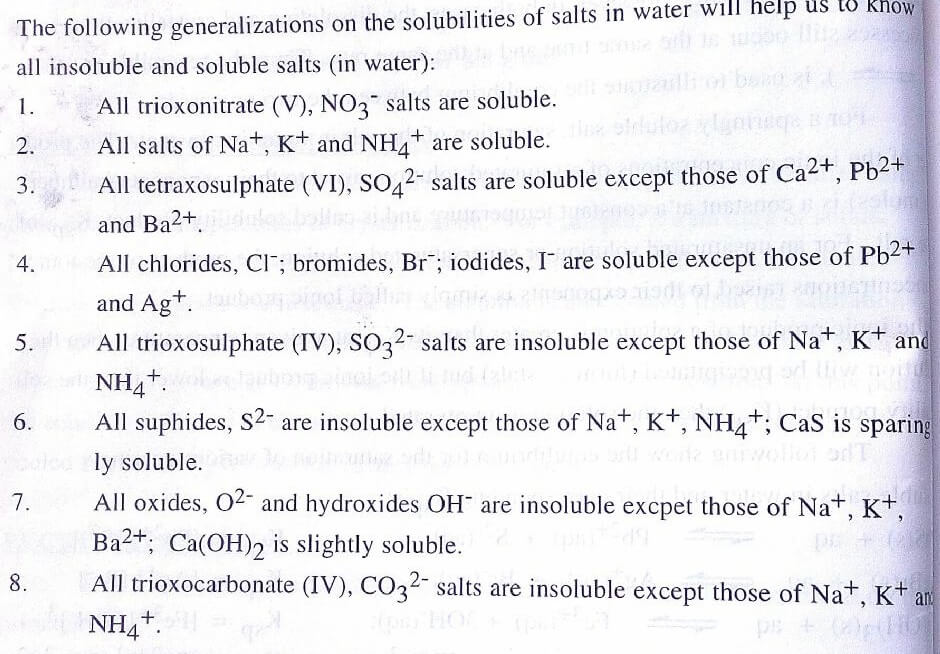The 8 General Solubility Rules. These are the reason why we can determine clearly the endpoints of reactions.
For instance the endpoint of the titration of AgNO3 against Cyanide is determined by the indicator KI. This is because after the endpoint the excess Ag+ in solution combines with I- to form Agl which is insoluble. It gives a cloudy colouration.
The following generalizations on the solubilities of salts in water will help us to all insoluble and soluble salts (in water):
- All trioxonitrate (V), NO3- salts are soluble.
- All salts of Na+, K+ and NH4+ are soluble.
- All tetraxosulphate (VI), SO42- salts are soluble except those of Ca2+, Pb2+ and Ba2+.
- All chlorides, Cl-; bromides, Br-; iodides, I- are soluble except those of Pb2+ and Ag+.
- All trioxosulphate (IV), SO32- salts are insoluble except those of Na+, K+ and NH4+
- All suphides, S2″ are insoluble except those of Na+, K+, NH4+; CaS is sparingly soluble.
- All oxides, O2- and hydroxides OH- are insoluble except those of Na+, K+, Ba2+; Ca(OH)2 is slightly soluble.
- All trioxocarbonate (IV), CO32- salts are insoluble except those of Na+ K+ and NH4+.

https://bit.ly/22YHJWM by https://bit.ly/1V0EbhM
